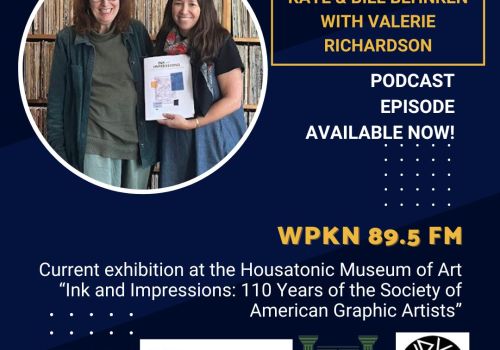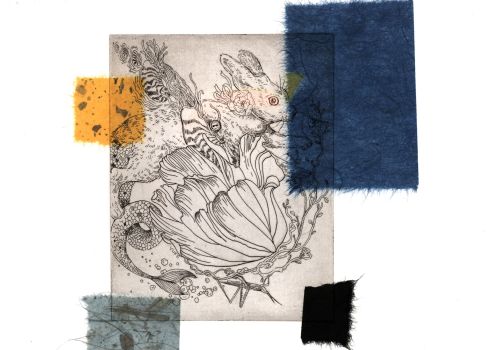
American Illustration
AMERICAN ILLUSTRATION: A BRIEF HISTORY
Susan E. Meyer
For nearly seven centuries all artists in the Western hemisphere were employed to display the wealth and power of their patrons. In the nineteenth century, however, a change occurred and the publishing industry – replacing all traditional patrons – emerged as the chief employer of artists. The publications succeeded both church and court as the great showcase for artists, and illustration, a creation of the Industrial Revolution, became the significant avenue for the artist.
At the end of the nineteenth century and during the early decades of the twentieth, books and periodicals provided the major source of public entertainment. Consequently, the contributors appearing in those pages — the writers and illustrators – assumed an importance of unprecedented proportions. Now that publishing has surrendered its exclusive power, overshadowed by the more pervasive presence of television and the Internet, it is not easy for the contemporary reader to imagine the extent of the artist's influence on the public mind. Illustrators had a crucial role in governing the cultural appetites of the day, and no American of that period could possibly remain unaffected by the millions of pictures circulated each week.
The years between 1865 and 1917 represent publishing's most exciting and dramatic time of expansion. This era, known as the Golden Age of Illustration, shaped the American character as we know it today and illustrators became inextricably linked to the development of an industry whose main purpose is to embrace the aspirations of an entire nation, to create the American Dream.
During this time period, Hartford became a major publishing center, attracting great writers of the day, such as Mark Twain and the African-American poet Jupiter Hammond. The expansion of the publishing industry was in direct correlation to the growth of American industry, with Connecticut a central hub. After all, the ingredients needed for the success of publishing were the same as those required for the expansion of any industry: a sufficiently large market, an economical method of manufacture, and an efficient means of distribution. All three of these components fell neatly into place in America after the Civil War.
The explosion of books and periodicals produced was a direct result of America's growing demand for reading matter that had increased substantially after the Civil War. The widespread introduction of public education throughout the nation had greatly reduced illiteracy, and more Americans than ever now possessed reading skills. Public libraries – another great American institution that expanded substantially after the Civil War as a result of legislation and private philanthropy – provided ready access to reading matter. If an appetite for reading had been created by public schools and libraries, private industry had also given Americans the increased time and income needed for reading. Reader consumerism was a direct outgrowth of the Industrial Revolution.
The success of publishing periodicals depends not only on readers, however, but on advertisers as well. The expansion of industry after the Civil War meant new wares to be sold, and periodicals provided the vehicles for manufacturers to hawk their merchandise, competing against their rivals in these pages for a greater share of the market. Starting with the first magazine to carry pages of advertising (Scribner's in 1887), this source of income grew increasingly important with the years.
While the market had developed, so had the means of distribution. The growing network of railroads provided an economical and rapid method of carriage across the nation. The improved transportation system also allowed artists to live further away from their employers and Westport and Weston soon became home to prominent artists and illustrators, including Karl Anderson, George Hand Wright, Rose O'Neill, John Held, Jr., and Arthur Dove. Later the Famous Artists School, founded by Albert Dorne along with Norman Rockwell, offered courses with leading illustrators such as Stevan Dohanos, Al Parker, Austin Briggs, Ben Stahl, John Whitcomb, Peter Helck, Harold von Schmidt, Robert Fawcett, John Atherton, and Fred Ludekens. Equally significant, a new postal law in 1885 reduced the rate for second-class matter to cent a pound and a rural free delivery system was instituted in 1897. Newsstand distribution became its own kind of business, beginning with the founding of the American News Company. With this merger, the principal retail and the primary wholesale periodical businesses in the nation were united.
Because of the greater dependence on advertising for income, the emphasis was increasingly placed on acquiring more readers at any cost. Sophisticated methods of expanding circulation were instituted – such as premiums – and it became less important to distribute magazines economically, but mandatory to reach more and more readers to attract larger advertising revenues. A circulation of 100,000 may have been considerable in 1890, but relatively insignificant by 1910. Every literate American was reading published material.
Technological improvement had as great an impact on the publishing industry as it had on other industries. Toward the end of the nineteenth century, the rotary press was introduced, a machine that enabled publishers to produce larger editions more rapidly and at lower cost. Of all the technological advances, however, none was more important to the American illustrator than the improvements made in pictorial reproduction. The significance of this advancement is worthy of greater elaboration here, since it is the single most important factor in making it possible for artists to expand their creative powers, liberated from the limitations formerly imposed upon them. This freedom hastened the development of illustration as a popular art.
Until the 1880s all reproduction was accomplished by means of wood engraving. The task of preparing the art was arduous and restrictive. On boxwood imported from Syria, the art would be prepared for printing. Boxwood is finely grained, ideal for engraving, but small in size because of the relatively small torso of boxwood trees. A large illustration might require a composite of several blocks… it would take an expert engraver ten or twelve hours to complete a wood engraving 5 x 4 inches in size. A full-page illustration would normally require one week to engrave.
In the 1870s one small technical advance improved the results for those artists preferring to create tonal works; the black-line was substituted by a white-line engraving. In the black-line engraving forms had been defined by areas of wood in high relief that carried the ink. With the white-line method the reverse is true, and the engraver was able to use flecks, dots, or lines to describe tones on the surface of the block. Frederic Remington took advantage of this minor technical advancement, preferring to work realistically whenever possible. Traditional pen and ink artists, such as Howard Pyle and A.B. Frost, however, continued to work with black-line engraving.
Artists found it difficult to accept the fact that their drawings were one step in a complex sequence of operations. (In many instances the engraver actually shared the credit for the illustration by signing his name alongside that of the artist.) The artist was beholden to the engraver, knowing full well that his reproduced illustration was only as good as the craftsman translating the work onto the block. An artist whose style was individual was particularly susceptible to mistranslation. In the hands of a mediocre craftsman his work could be destroyed. It is no wonder that bitterness and animosity often arose between artists and engravers.
Engraving improved greatly throughout the nineteenth century, primarily because of the great number of European craftsman to enter this country, but the cost of reproduction was extremely high. An average engraver received from $25.00 to $50.00 a week (some even higher), and the House of Harper claimed that it ultimately cost about $500.00 to engrave an average full-page block.
When photography was introduced into the printing process all this was to ultimately change. The photo-mechanical operation of translating the image to the plate by means of creating a photographic negative permitted the reduction or enlargement of the original design for reproduction. By using the electrotype process (known since 1839), a metal relief plate could be created mechanically from the photographic image, eliminating the need for wood engravers to perform comparable operations by hand. While the engraving of line drawings could be accomplished with relative ease, tonal work required a system of breaking up the continual tones into separate printing elements in order to simulate the middle (or half) tones between black and white. The so-called "halftone" process of photo-engraving provided the solution. With this method, the art was photographed with a large camera through a sheet of glass on which a series of cross lines had been finely and expertly drawn. This photograph would result in a screen negative, the lines of the glass breaking up the tones of the original art into a series of dots, larger or smaller, densely or sparsely populated, depending on the nature of the tones in the original subject. These dots could then be etched into the plate chemically so that the image would be translated onto the final printing surface mechanically in the form suitable for reproduction.
During the 1880s the publications experimented extensively with the halftone method of engraving. After the first commercial application of the screen process appeared in the New York Daily Graphic (a picture entitled "Shantytown"), the other halftones were seen more and more frequently. These early examples tended to be flat and muddy, and engravers were still employed to improve upon the plates produced the process. But by 1900 halftone reproduction – and the results obtained on the clay-coated papers created specially for the new process – had advanced so greatly that staff artists and engraving departments could be dispensed with altogether. No longer could the engraver be blamed for a poor illustration. No longer could poor draftsmanship be concealed with slapdash techniques. The new process recorded everything; it could display the best qualities of an expert illustrator, and expose the deficiencies of the less qualified. In turn, the newly developed screen halftone process created a preference for realistic pictures, fully modeled, and a new school of illustrators emerged to meet this popular demand.
Because of these technological, social, and economic developments, hundreds of publishing companies naturally emerged to produce a vast array of books and periodicals. It became a vigorous and aggressive industry that far out rivaled European counterparts. From this large field, only a few companies actually constituted the arena in which appeared America’s favorite illustrators. Yet, these few publications – and the few illustrators whose work appeared in them – represented a force in American cultural life that is almost unimaginable today. These publications had a major impact on the taste, humor, morals, and buying habits of the public, and defined the aspirations of an entire American civilization.
Today, illustration may be entering a second "golden age" although editorial illustration is no longer dominant, new avenues have opened up while older traditions, such children's illustrations, have been reinvigorated. Illustrators are well-versed in both the technology of computer software programs and traditional illustration drawing methods. As a result, traditional and digital techniques are often used in conjunction with each other. In the twenty-first century, illustration has reemerged as a key component in the creative and entertainment companies, becoming a new and significant factor in industries, such as graphic novels, video games, movies, animation, as well as advertising and publishing.


